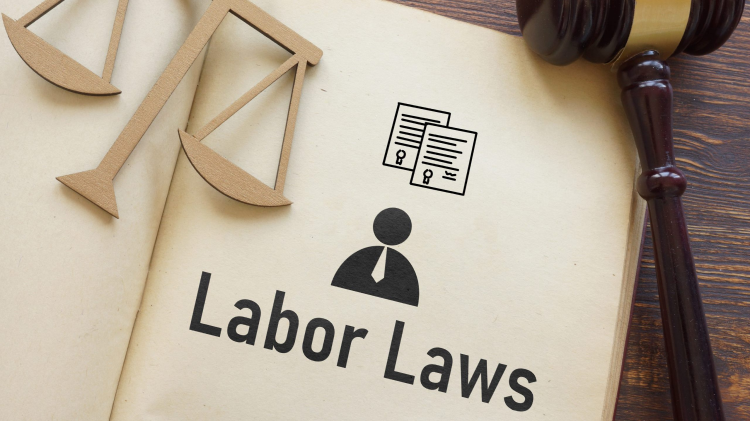Welcome to An Employer’s Guide to Labor Laws. Understanding federal and state labor laws is essential for employers to maintain compliance and protect their businesses. Key federal labor laws, such as the Fair Labor Standards Act (FLSA), set nationwide standards for minimum wage, overtime pay, and child labor regulations. Additionally, the Family and Medical Leave Act (FMLA) provides employees with job-protected leave for certain family and medical reasons. These laws establish the baseline for employee rights and employer responsibilities across the United States.
However, federal laws are not the only regulations employers must follow. State labor laws can differ significantly from federal standards, often providing additional protections for employees. For example, some states have higher minimum wage requirements or more generous leave policies than those mandated by federal law. Employers must understand these differences to ensure they are fully compliant with all applicable regulations.
Navigating the interplay between federal and state labor laws requires careful attention. When state laws offer greater employee protections, employers must adhere to the stricter standards. Failing to comply with either federal or state regulations can result in legal penalties and damage to the company’s reputation. Therefore, staying informed and up-to-date on labor laws is crucial for all employers.
Employee Rights and Employer Obligations
Employee rights and employer obligations form the foundation of fair workplace practices. Employers must adhere to minimum wage laws, ensuring that employees receive at least the federally mandated wage. Some states, however, set higher minimum wages, and employers must comply with the more generous standard. Additionally, employers are required to pay overtime at one and a half times the regular rate for any hours worked beyond 40 in a workweek. Properly tracking and compensating for working hours is crucial to avoid legal disputes and ensure compliance.
Beyond wages, employers have a duty to maintain safe and healthy working conditions. The Occupational Safety and Health Administration (OSHA) sets and enforces standards that employers must follow to protect employees from workplace hazards. Regular safety training, proper equipment, and hazard communication are all essential components of OSHA compliance. By proactively addressing potential risks, employers not only meet their obligations but also foster a safer work environment.
Moreover, ensuring compliance with both wage regulations and safety standards is vital for maintaining a productive and fair workplace. Employers who neglect these obligations risk legal penalties, employee dissatisfaction, and potential harm. Therefore, staying informed and diligent about employee rights and employer responsibilities is crucial for long-term business success.
Anti-Discrimination and Harassment Laws
In this employer’s guide to labor laws, we need to address discrimination. Anti-discrimination and harassment laws play a critical role in promoting fairness and equality in the workplace. Equal Employment Opportunity (EEO) guidelines prohibit discrimination based on race, color, religion, sex, national origin, age, disability, or genetic information. These guidelines ensure that all employees and job applicants are treated fairly, regardless of their personal characteristics. Employers must implement and enforce policies that align with EEO standards to prevent discriminatory practices and promote an inclusive work environment.
In addition to preventing discrimination, employers must also address workplace harassment. Harassment, which includes unwelcome conduct based on protected characteristics, can create a hostile work environment if not properly managed. Employers are responsible for establishing clear anti-harassment policies and providing regular training to employees. By fostering a respectful workplace culture, employers can reduce the risk of harassment incidents and ensure a supportive environment for all employees.
Furthermore, retaliation against employees who report discrimination or harassment is strictly prohibited. Employers must protect employees who come forward with complaints from any form of retaliation, such as demotion, dismissal, or unfavorable treatment. Effective policies on workplace harassment and retaliation not only comply with legal requirements but also contribute to a positive and productive workplace. By actively enforcing these policies, employers demonstrate their commitment to upholding the rights and dignity of every employee.
Hiring, Firing, and Employee Classification
Hiring, firing, and employee classification are fundamental aspects of employment law that require careful attention. When hiring, employers must adhere to legal requirements, including verifying an applicant’s eligibility to work in the country. Employers should also avoid discriminatory practices during recruitment by ensuring that all hiring decisions are based on qualifications rather than protected characteristics. Proper documentation throughout the hiring process is essential for compliance and can help protect the organization from potential legal challenges.
Similarly, terminating an employee must be handled in accordance with legal guidelines. Employers need to ensure that termination is justified and not based on discriminatory reasons. It’s important to follow company policies and provide proper notice where applicable. In cases of layoffs or dismissals, clear communication and proper documentation can help mitigate the risk of wrongful termination claims. Employers should also be aware of any severance obligations or continuation of benefits required by law.
Another critical area involves the proper classification of workers as either employees or independent contractors. Misclassification can lead to significant legal and financial consequences. Employees are entitled to certain benefits, such as overtime pay and health insurance, which independent contractors do not receive. Therefore, it’s crucial to correctly determine the worker’s status based on the nature of the work relationship. Employers must assess factors like control over work performance, financial arrangements, and the degree of independence to ensure compliance with classification laws.
In conclusion, adhering to legal requirements in hiring, firing, and employee classification not only protects the organization from legal risks but also promotes fair and ethical business practices. Employers who take the time to understand and implement these regulations are better positioned to maintain a compliant and harmonious workplace.
Compliance and Penalties for Violations
Ensuring compliance with labor laws is crucial for any organization to operate legally and ethically. Employers should regularly review and update their policies to align with current regulations. Implementing a robust compliance program, including employee training and clear communication of workplace policies, is essential. Regular audits and monitoring can help identify potential issues early, allowing corrective actions to be taken before they escalate. By staying proactive, employers can maintain a compliant workplace and reduce the risk of violations.
However, failure to comply with labor laws can lead to severe consequences. Penalties for non-compliance range from fines and back pay to more significant legal actions, such as lawsuits or government sanctions. In some cases, non-compliance can result in criminal charges or loss of business licenses. Additionally, reputational damage can have long-lasting effects on the organization, potentially leading to lost business opportunities and a diminished ability to attract top talent.
Therefore, maintaining compliance with labor laws is not just a legal obligation but a strategic necessity. Employers who prioritize compliance protect their business from costly penalties and foster a fair and equitable workplace. This commitment to legal and ethical standards ultimately contributes to the long-term success and sustainability of the organization.
Conclusion
In conclusion, An Employer’s Guide to Labor Laws is essential for navigating the complex legal landscape of employment. By understanding and adhering to these laws, employers can protect their businesses, foster a fair workplace, and ensure compliance with all regulatory requirements. Prioritizing knowledge and compliance not only safeguards against legal risks but also contributes to a positive and productive work environment.



